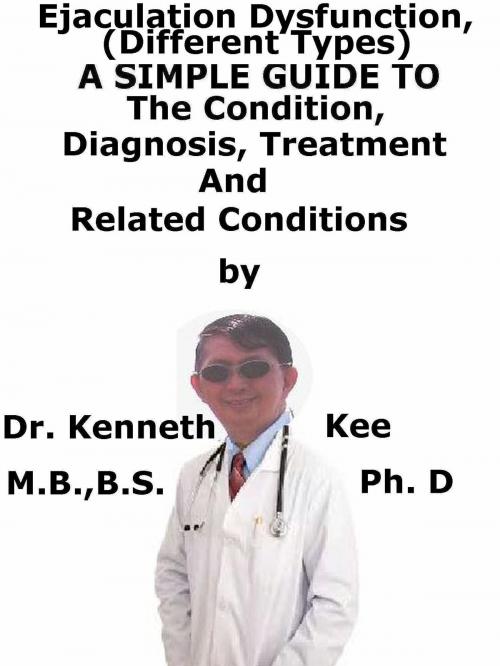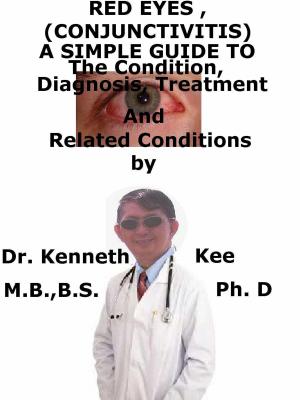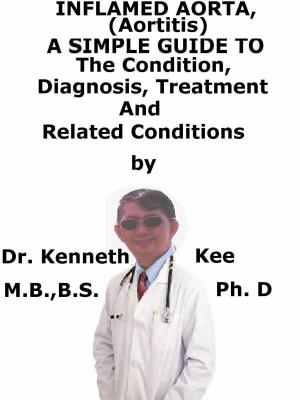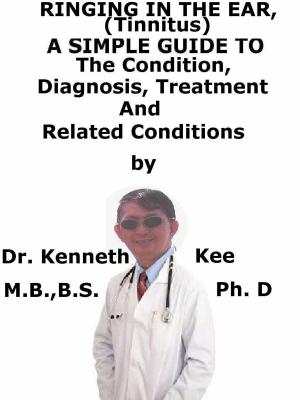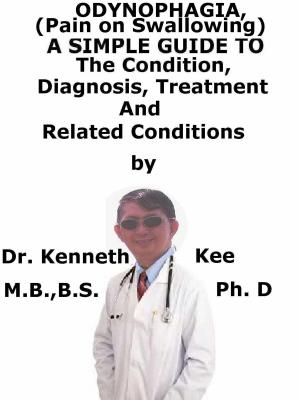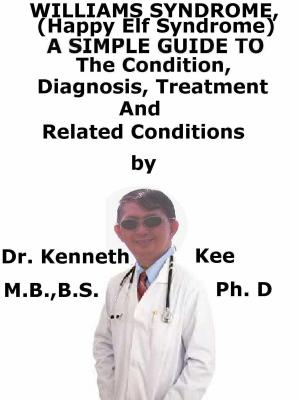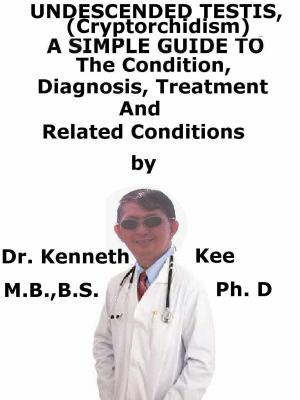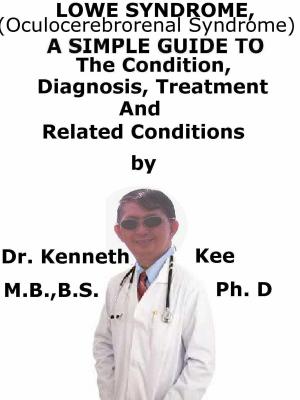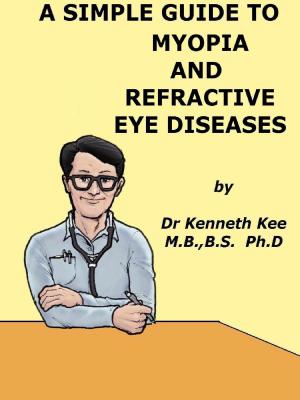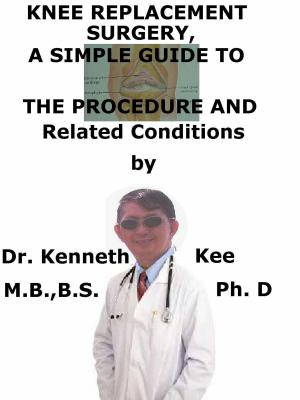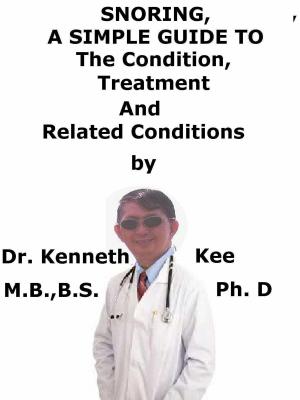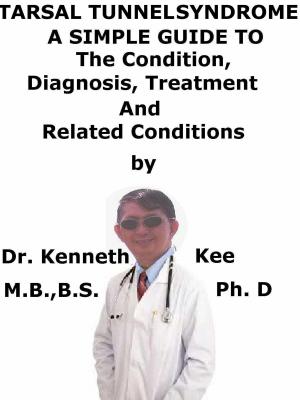Ejaculatory Dysfunction, (Different Types) A Simple Guide To The Condition, Diagnosis, Treatment And Related Conditions
Nonfiction, Health & Well Being, Medical, Specialties, Reproductive Medicine, Health, Men&| Author: | Kenneth Kee | ISBN: | 9781370437931 |
| Publisher: | Kenneth Kee | Publication: | August 3, 2017 |
| Imprint: | Smashwords Edition | Language: | English |
| Author: | Kenneth Kee |
| ISBN: | 9781370437931 |
| Publisher: | Kenneth Kee |
| Publication: | August 3, 2017 |
| Imprint: | Smashwords Edition |
| Language: | English |
Ejaculatory dysfunction is the inability of a man to successfully ejaculate semen from the penis at the occasion of sexual climax.
Typically, ejaculatory disorders fall into two categories.
These are: delayed ejaculation and early ejaculation.
In the vast majority of cases, the most effective therapeutic approach for ejaculatory dysfunction is a combination of biologic and psychological therapy.
The main types of male sexual dysfunction are:
1. Erectile dysfunction (difficulty getting/keeping an erection)
2. Ejaculatory Dysfunction
a. Premature ejaculation (reaching orgasm too quickly)
b. Delayed or inhibited ejaculation (reaching orgasm too slowly or not at all)
c. Retrograde or no ejaculation (dry orgasm)
3. Low libido (reduced interest in sex)
Ejaculatory dysfunction is one of the most frequent male sexual disorders, but is still often misdiagnosed
A normal sexual response cycle consists of four interactive, nonlinear stages:
1.Desire,
2.Arousal,
3.Orgasm and
4.Resolution
In males, orgasm normally coincides with ejaculation, but represents a distinct cognitive and emotional cortical event.
Psychological causes might include:
1. Concern about sexual performance
2. Marital or relationship problems
3. Depression, feelings of guilt
4. Effects of past sexual trauma
5. Work-related stress and anxiety
Physical causes of overall ejaculatory dysfunction may be:
1. Low testosterone levels
2. Prescription drugs (antidepressants, high blood pressure medicine)
3. Blood vessel disorders such as atherosclerosis (hardening of the arteries) and high blood pressure
4. Stroke or nerve damage from diabetes or surgery
5. Smoking
6. Alcoholism and drug abuse
Problems with ejaculation are:
1. Premature ejaculation (PE) 75%— Ejaculation that occurs before or too soon after penetration
2. Inhibited or delayed ejaculation 8% — Ejaculation does not happen or takes a very long time
3. Retrograde ejaculation — During orgasm, the ejaculate is forced to return back into the bladder rather than through the end of the penis
4. Anejaculation — Absence of ejaculation
Normal ejaculation involves:
1. An emission phase, when semen is positioned in the penis near the prostate, and
2. An ejaculation phase, when the semen is forcefully expelled from the penis.
Ejaculation occurs at sexual climax, or the expulsion of the sperm.
Climax is different from an orgasm, which is centered in the brain and associated with ejaculation.
The mechanics of ejaculation are similar to a sneeze: both are reflexes with a point of no return.
The average time from sexual penetration by the male to ejaculation is nine minutes
Diagnosis:
Sexual History
1. Blood tests to check the testosterone levels, blood sugar (for diabetes), and cholesterol
2. Blood pressure check
3. Rectal exam to check the prostate
4. Examination of the penis and testicles
5. Other tests can show if the patient have problems with the nerve impulses or blood flow to the penis.
Treatment:
Treatments for ejaculatory dysfunction are medications, behavioral therapy (for premature ejaculation) and sometimes surgery.
TABLE OF CONTENT
Introduction
Chapter 1 Ejaculatory Dysfunction
Chapter 2 Causes
Chapter 3 Diagnosis
Chapter 4 Treatment
Chapter 5 Anejaculation
Chapter 6 Delayed ejaculation
Chapter 7 Retrograde ejaculation
Chapter 8 Premature ejaculation
Epilogue
Ejaculatory dysfunction is the inability of a man to successfully ejaculate semen from the penis at the occasion of sexual climax.
Typically, ejaculatory disorders fall into two categories.
These are: delayed ejaculation and early ejaculation.
In the vast majority of cases, the most effective therapeutic approach for ejaculatory dysfunction is a combination of biologic and psychological therapy.
The main types of male sexual dysfunction are:
1. Erectile dysfunction (difficulty getting/keeping an erection)
2. Ejaculatory Dysfunction
a. Premature ejaculation (reaching orgasm too quickly)
b. Delayed or inhibited ejaculation (reaching orgasm too slowly or not at all)
c. Retrograde or no ejaculation (dry orgasm)
3. Low libido (reduced interest in sex)
Ejaculatory dysfunction is one of the most frequent male sexual disorders, but is still often misdiagnosed
A normal sexual response cycle consists of four interactive, nonlinear stages:
1.Desire,
2.Arousal,
3.Orgasm and
4.Resolution
In males, orgasm normally coincides with ejaculation, but represents a distinct cognitive and emotional cortical event.
Psychological causes might include:
1. Concern about sexual performance
2. Marital or relationship problems
3. Depression, feelings of guilt
4. Effects of past sexual trauma
5. Work-related stress and anxiety
Physical causes of overall ejaculatory dysfunction may be:
1. Low testosterone levels
2. Prescription drugs (antidepressants, high blood pressure medicine)
3. Blood vessel disorders such as atherosclerosis (hardening of the arteries) and high blood pressure
4. Stroke or nerve damage from diabetes or surgery
5. Smoking
6. Alcoholism and drug abuse
Problems with ejaculation are:
1. Premature ejaculation (PE) 75%— Ejaculation that occurs before or too soon after penetration
2. Inhibited or delayed ejaculation 8% — Ejaculation does not happen or takes a very long time
3. Retrograde ejaculation — During orgasm, the ejaculate is forced to return back into the bladder rather than through the end of the penis
4. Anejaculation — Absence of ejaculation
Normal ejaculation involves:
1. An emission phase, when semen is positioned in the penis near the prostate, and
2. An ejaculation phase, when the semen is forcefully expelled from the penis.
Ejaculation occurs at sexual climax, or the expulsion of the sperm.
Climax is different from an orgasm, which is centered in the brain and associated with ejaculation.
The mechanics of ejaculation are similar to a sneeze: both are reflexes with a point of no return.
The average time from sexual penetration by the male to ejaculation is nine minutes
Diagnosis:
Sexual History
1. Blood tests to check the testosterone levels, blood sugar (for diabetes), and cholesterol
2. Blood pressure check
3. Rectal exam to check the prostate
4. Examination of the penis and testicles
5. Other tests can show if the patient have problems with the nerve impulses or blood flow to the penis.
Treatment:
Treatments for ejaculatory dysfunction are medications, behavioral therapy (for premature ejaculation) and sometimes surgery.
TABLE OF CONTENT
Introduction
Chapter 1 Ejaculatory Dysfunction
Chapter 2 Causes
Chapter 3 Diagnosis
Chapter 4 Treatment
Chapter 5 Anejaculation
Chapter 6 Delayed ejaculation
Chapter 7 Retrograde ejaculation
Chapter 8 Premature ejaculation
Epilogue
